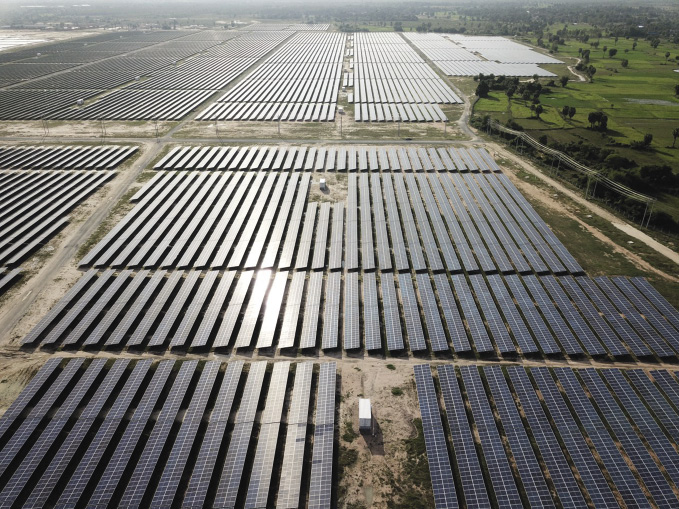In 2019, Vietnam was a shining star among growing Asian solar markets. Driven by its generous feed-in-tariff (FIT) and other encouraging policies from the central government, the country is now Southeast Asia’s hottest solar market. Between February and April alone, 4.46 GW of solar PV capacity was connected to the grid, spurred by a rush to have systems installed under a looming incentive drop and corresponding connection deadline. But the country’s FIT, which supported the large-scale adoption of PV power plants, was suddenly suspended in November by Prime Minister Nguyen Xuan Phuc. According to Vietnam Electricity (EVN), the nation’s largest power company, 135 projects had been approved to be installed under the incentive scheme – a cumulative total capacity of 8.93 GW. The country has since shifted its PV development focus to distributed generation – C&I, residential rooftop, and floating systems – but the upsurge of solar development will continue. Due to the latest policy changes and the time duration needed to upgrade the power grid to support additional development, market research firm Wood Mackenzie predict that the next PV installation peak will occur in late 2021.
Thailand, meanwhile, promulgated its long-term power development plan (PDP) in mid-2019, supporting the country’s already vibrant solar market. As of last year, it had 3.5 GW of solar capacity installed. The PDP institutionalized a 20-year development plan for solar PV. Renewable energy will supply 30% of the national energy mix by the end of 2037, increasing from its current 10% mark. Under the plan, there will be approximately 10 GW of rooftop PV capacity and roughly 2.3 GW of floating PV to be developed by the Electricity Generating Authority of Thailand (EGAT) on nine dams in the future. The country has provided a solar FIT for projects between 10 MW and 90 MW in size. But to further push solar adoption, Thailand has applied a net-metering (NEM) scheme for small PV projects in the residential sector. The shift from a FIT to a net-metering scheme is expected to drive the adoption of distributed PV for private and public facilities to sell power to the grid, to benefit multiple parties and the economy.
Singapore-based Sembcorp is one of the largest energy development companies in the PV market of the Association of Southeast Asian Nations (ASEAN). Jen Tan, senior VP and head of vertical solar at the company, says the region is full of promise: “We see that ASEAN countries may have the greatest market prospect for solar PV development, and we work closely with our local partners to enhance the power capacity of these countries.” One such company is Huawei. Tan says that Huawei has been a good partner for Sembcorp, as the inverter manufacturer provides quality products and customer service with quick response times. And with the incentive drops seen in Vietnam and Thailand, it is more crucial than ever to quickly move installations forward to maintain project economics.
China, Taiwan, meanwhile, also has an ambitious plan for future solar PV development. It reached a solar PV installation capacity of roughly 1.6 GW in 2019, with a cum
ulative total of 4.3 GW deployed. The rapid growth of the market has been partially due to the “Solar PV Two Years Sprint Plan” implemented by the Taiwan local government in 2016. The government also decided to upgrade its local grid network to accommodate even more renewable energy to facilitate a jump in solar PV development from 2020 onwards, in support of its ambitious goal to reach 20 GW of solar PV installations by the end of 2025. Taiwan’s premier, Su Tseng-chang, has said that the new plan will build on the one that was implemented in 2016, with the goal of achieving 6.5 GW of PV capacity by the end of 2020, and 3.7 GW in 2021.
After the Fukushima nuclear disaster in 2011, South Korea pumped the brakes in its pursuit of nuclear energy and instead turned to other renewables, such as wind and solar. With the release of its Renewable Portfolio Standard Scheme (RPS) in 2012 as a replacement of its pre-existing FIT, it became required that power generators needed to have a certain proportion of new clean energy in their portfolios. The policy currently mandates 6% renewables in their energy mix, and requirements will gradually rise to 10% by 2030. In 2017, South Korea entered the GW club of PV markets – and the numbers are showing no sign of slowing down. In mid-2017, newly elected South Korean President Moon Jae-in called for an energy shift away from traditional fossil fuels and nuclear power, in favor of renewables and natural gas. He canceled six planned nuclear reactors, restricted license renewals of existing nuclear power plants, and stopped the construction of new coal power stations. And then in late 2017, the president proposed the now widely known “RE3020” plan, whereby the proportion of renewable energy in the power supply will increase to 20% by 2030 – which means 30.8 GW solar PV will be installed by then.
This content is protected by copyright and may not be reused. If you want to cooperate with us and would like to reuse some of our content, please contact: editors@pv-magazine.com.
